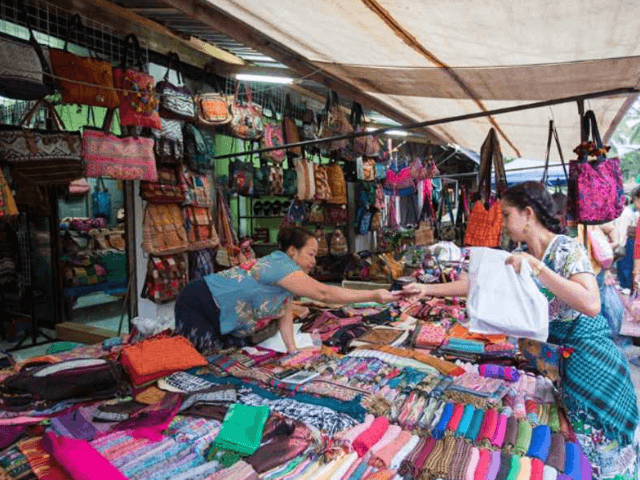Discover the magic of winter travel in Vietnam—from snowy Sapa to sunny Phu Quoc. Explore weather, festivals, food, and the best places to visit in 2025.
TABLE OF CONTENTS
1
Why Visit Vietnam in Winter?
2
Vietnam Winter Weather Guide
Northern Vietnam (Hanoi, Sapa, Ha Long Bay)
Central Vietnam (Da Nang, Hue, Hoi An)
Southern Vietnam (Ho Chi Minh City, Mekong Delta, Phu Quoc)
3
Best Places to Visit in Winter in Vietnam
Sapa – Snow-Capped Mountains & Rice Terraces
Hanoi – Cozy Winter Vibes & Street Food
Ha Long Bay – Misty Cruises in December & January
Da Nang & Hoi An – Mild Coastal Winter
Phu Quoc – Warm Island Escape
4
Winter Festivals & Events in Vietnam
Christmas Celebrations in Vietnam
Perfume Pagoda Festival
Lunar New Year (Tet Holiday)
5
What to Pack for Winter Travel in Vietnam
Clothing Essentials for North vs South
Travel Gear for Cold Weather Adventures
6
Food & Drinks to Try in Vietnam During Winter
7
Travel Tips for Winter in Vietnam
8
FAQs About Winter Travel in Vietnam
9
Conclusion: Why Winter is the Perfect Time to Explore Vietnam
Winter in Vietnam offers a magical blend of misty mountains, cool city vibes, and warm southern beaches. Unlike Western countries where winter often means snow and freezing temperatures everywhere, Vietnam’s climate varies dramatically depending on the region. This makes the country a unique winter travel destination - where you can sip hot egg coffee in Hanoi one day and relax on Phu Quoc’s sunny beaches the next.
Why Visit Vietnam in Winter?
Travelers love Vietnam in winter because the weather is diverse yet manageable. From snow-dusted mountains in Sapa to pleasantly cool evenings in Hanoi and warm, dry conditions in the south, Vietnam in winter is ideal for both adventure seekers and leisure travelers. Plus, winter months often coincide with major cultural festivals, giving visitors a deeper look into Vietnamese traditions.
.png)
Vietnam Winter Weather Guide
Northern Vietnam (Hanoi, Sapa, Ha Long Bay)
- Temperature: 10°C–20°C (50°F–68°F)
- Hanoi enjoys crisp, cool days with occasional drizzle. Sapa can get freezing in January, and some years even bring snow, turning the rice terraces into a winter wonderland. Ha Long Bay in winter is often misty, adding a mystical aura to its limestone karsts.
Central Vietnam (Da Nang, Hue, Hoi An)
- Temperature: 18°C–25°C (64°F–77°F)
- Central Vietnam sees fewer tourists in winter because of light rainfall, but it’s still a great time to visit Da Nang’s beaches and Hoi An’s lantern-lit streets. Hue can be cooler, making temple visits comfortable.
Southern Vietnam (Ho Chi Minh City, Mekong Delta, Phu Quoc)
- Temperature: 25°C–32°C (77°F–90°F)
- Southern Vietnam is dry and sunny, perfect for outdoor activities. Ho Chi Minh City is lively, Phu Quoc offers postcard-perfect beaches, and the Mekong Delta becomes an adventure paradise with boat tours under clear skies.
.png)
Best Places to Visit in Winter in Vietnam
Sapa – Snow-Capped Mountains & Rice Terraces
Sapa is Vietnam’s winter highlight. Nestled in the northern mountains, it offers trekking adventures, homestays with local ethnic groups, and the rare chance to see snow in Southeast Asia. Winter transforms the rice terraces into a surreal landscape.
Hanoi – Cozy Winter Vibes & Street Food
Winter in Hanoi is chilly but full of charm. Locals bundle up and flock to street vendors for steaming bowls of pho and egg coffee. The French Quarter looks magical in the mist, and Hoan Kiem Lake becomes a perfect spot for evening strolls.
.png)
Ha Long Bay – Misty Cruises in December & January
Cruising Ha Long Bay in winter feels mystical. The limestone cliffs rise through the fog, and the cooler weather makes kayaking and cave exploration more comfortable.
Da Nang & Hoi An – Mild Coastal Winter
Da Nang’s beaches are quieter in winter, while Hoi An’s lantern festival glows brighter against the cool nights. It’s the best season for exploring without the summer crowds.
Phu Quoc – Warm Island Escape
If the northern chill isn’t your style, head south to Phu Quoc. Winter here means sunshine, calm waters, and some of the best sunsets in Vietnam.
Winter Festivals & Events in Vietnam
Christmas Celebrations in Vietnam
Although Vietnam is not a Christian-majority country, Christmas is celebrated vibrantly in big cities. Churches are decorated, and shopping malls light up with festive displays.
.png)
Perfume Pagoda Festival
Held in late winter (around February–March), this spiritual pilgrimage attracts thousands who journey by boat and hike up to the Perfume Pagoda near Hanoi.
Lunar New Year (Tet Holiday)
Tet, usually in late January or February, is Vietnam’s biggest festival. Streets bloom with kumquat trees, red decorations, and bustling markets.
What to Pack for Winter Travel in Vietnam
Clothing Essentials for North vs South
- North (Hanoi, Sapa): Warm jackets, sweaters, scarves.
- South (Ho Chi Minh, Phu Quoc): Light clothing, sunscreen, hats.
- Central (Hue, Da Nang): Layers, as weather changes quickly.
Travel Gear for Cold Weather Adventures
- Hiking boots for Sapa treks
- Rain jacket for unexpected drizzles
- Power bank for long train rides
Food & Drinks to Try in Vietnam During Winter
Hotpot & Winter Soups
Vietnamese hotpot (lẩu) is a must during cold evenings. It’s social, warming, and packed with flavors.
.png)
Egg Coffee in Hanoi
A winter favorite - strong Vietnamese coffee topped with whipped egg yolk and sugar, creating a warm dessert-like drink.
Street Food Specialties
Try Bún riêu (crab noodle soup), xôi nóng (sticky rice), and grilled skewers at night markets.
Travel Tips for Winter in Vietnam
- Transportation: Sleeper trains are cozy in winter, especially between Hanoi and Sapa.
- Budget vs Luxury: Winter is off-season in some areas, meaning lower hotel rates.
- Festivals: Plan around Tet, as travel gets expensive and crowded during the holiday.
FAQs About Winter Travel in Vietnam
Q1: Is December a good time to visit Vietnam?
Yes! December offers cool, dry weather in the north and perfect beach conditions in the south.
Q2: Does it snow in Vietnam?
Rarely, but in Sapa and some northern mountains, snow can fall in January or February.
Q3: What should I pack for Vietnam in winter?
Pack warm clothes for the north and light summer wear for the south. A rain jacket is handy everywhere.
Q4: Is Tet a good time for tourists?
Yes and no. It’s culturally fascinating, but transport and hotels may be fully booked.
Q5: Are beaches good in winter in Vietnam?
Yes! Phu Quoc and southern beaches have sunny, dry weather in winter.
Q6: Which part of Vietnam is coldest in winter?
Sapa and the northern highlands experience the coldest winters, sometimes dropping below 0°C.
Conclusion: Why Winter is the Perfect Time to Explore Vietnam
Winter in Vietnam is a season of contrasts: misty northern mountains, vibrant central cities, and tropical southern islands. Whether you’re chasing snow in Sapa, cultural charm in Hanoi, or sunny beaches in Phu Quoc, Vietnam in winter has something for every traveler.














.jpg&w=828&q=75)